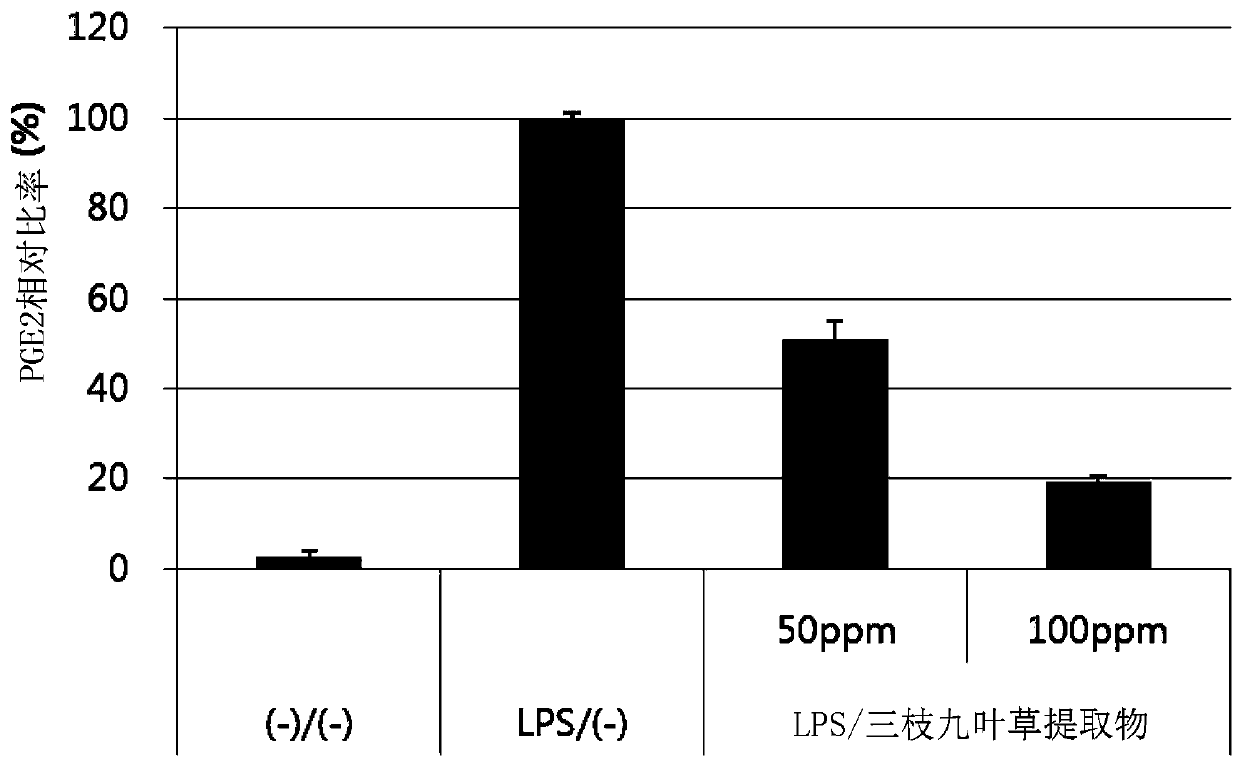Composition for prevention or treatment of oral disease comprising Epimedium Herb extract
A technology for oral diseases and compositions, applied in the field of quasi-drug compositions, can solve problems such as unclear action, tissue irritation, tissue coloration and degeneration
- Summary
- Abstract
- Description
- Claims
- Application Information
AI Technical Summary
Problems solved by technology
Method used
Image
Examples
Embodiment 1
[0072] Embodiment 1: Preparation of Herbal Extract of Epimedium
[0073] Add ethanol to the dried sample of the crushed or cut Epimedium herb, sonicate (sonication) for 15 minutes, and the process of standing at room temperature for 2 hours is repeated 10 times a day, and the obtained extract solution is filtered and concentrated. A sample frozen in a deep freezer was dried in a freeze dryer to obtain an Epimedium Herb extract. In order to use the herb extract of Epimedium obtained as described above for the experiment, it was dissolved in 0.5% CMC (carboxymethylcellulose) solution and DMSO (dimethyl sulfoxide: dimethyl sulfoxide), respectively to use.
experiment example 1
[0074] Experimental Example 1: Antibacterial effect against caries or periodontitis-causing bacteria
[0075] In order to determine the preventive or therapeutic effect of the epimedium herbal extract on dental caries and periodontitis, an antibacterial activity test was carried out. In order to determine the growth inhibitory effect of oral pathogenic bacteria, Streptococcus mutans, which is a representative bacterium causing dental caries, and Porphyromonas gingivalis, which is a representative bacterium which causes periodontal disease, were examined by using a paper plate. The antimicrobial activity test was carried out.
[0076] After each of the above-mentioned oral pathogenic bacteria is increased in activity under the optimal culture conditions of the following table 1, it is cultivated in the optimal medium of each bacterium for 4 to 6 hours, and the turbidity of the culture solution is adjusted to Macfarland turbidity (Macfarland turbidity). )No.0.5(1.5X10 8 ), and 0...
experiment example 2
[0083] Experimental Example 2: Gingivitis Formation Inhibition Effect
[0084] In order to determine the preventive or therapeutic effect of the epimedium herbal extract on gingivitis, a clinical experiment was carried out by selecting a test subject group.
[0085] First, sodium carboxymethylcellulose, sodium lauryl sulfate, glycerin, colloidal silicon dioxide, silicon dioxide, sodium cocoyl isethionate, and dodicin, which are commonly used in the manufacture of toothpaste, are used A control toothpaste was prepared with sweeteners, fragrances, colorants, etc., and 0.01% by weight of the Epimedium herb extract was added to the above-mentioned control toothpaste to prepare an experimental group toothpaste.
[0086] In order to select the test subjects, gingivitis patients with neat and undefective teeth were taken as subjects, and a precise oral examination was carried out for every 30 people according to gender at intervals of 10 years old from 30 to 50 years old. Then, 120 ...
PUM
 Login to View More
Login to View More Abstract
Description
Claims
Application Information
 Login to View More
Login to View More - R&D
- Intellectual Property
- Life Sciences
- Materials
- Tech Scout
- Unparalleled Data Quality
- Higher Quality Content
- 60% Fewer Hallucinations
Browse by: Latest US Patents, China's latest patents, Technical Efficacy Thesaurus, Application Domain, Technology Topic, Popular Technical Reports.
© 2025 PatSnap. All rights reserved.Legal|Privacy policy|Modern Slavery Act Transparency Statement|Sitemap|About US| Contact US: help@patsnap.com



